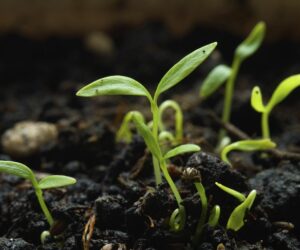It is amazing when you can find fresh, tasty fruits in the right your own garden. November can be the perfect month for planting some new Autumn Fruit trees. Just make sure to provide some winter protection for overwintering. If you live in a zone where the ground freezes by November, it is maybe better to wait until spring. Find a fruit tree that thrives in your climate. You can ask for help at your local garden center.
Read on to learn more about what is important for successful Autumn Fruit tree planting and growing.
1. Location

Via www.youtube.com
Fruit trees really love the sun. Try to choose a location that will provide around six to eight hours of sunlight per day. The tree also needs a lot of space, so make sure to consider the size of a full-grown tree when choosing the location. It will grow better, and it will be easier to maintain if there is enough room.
2. What to plant

Deciduous fruit trees like apple, pear, plum, apricot, fig, peach, nectarine, and apricot are great winter planting choices. The citrus trees such as orange, lemon, mandarin, and lime are also available and ideal for planting at this time.
3. Soil

First, add good garden compost and mix it with the soil. The ratio should be 50:50, and the soil should be rich in nutrients and retain moisture. All trees also need good drainage. Place the tree in the middle and fill the hole with the mix. Gently firm the ground around the tree with your feet.
4. Planting

Dig around 3 feet wide square hole, which will be deep enough for the tree to be planted on the same level as when it was first grown. Look for the mark on the trunk that indicates where the soil level was. Add the cane close to the tree and in the end, fix it with the tie. You can call Pearland tree experts for tree planting advice.
5. Watering

After the planting, you should water the soil well to prevent the roots from drying out and help the soil settle around the tree. Trees planted in the fall require less water because of the cooler temperatures, so that it will be much easier for you than during the summer.
6. Tips

It is recommended to add about the three-inch layer of mulch around the tree. This will help to retain the moisture. Also, add a protective tube around the trunk if animals are a problem. You should prune your fruit tree late in the winter. It will help the tree produce more fruit.
7. First year

During the first year, the tree will be very vulnerable. It needs nutrients and to be well watered, especially during the dry weather. The first year you should also remove all blossoms from the tree. If you let some fruit develop, it might be too stressful for a young tree.
8. Problems

Via simplytreesut.blogspot.com
If the trees are planted too close together or to other plants nearby, they will compete for the nutrients. During the winter, be careful that the snow from the roof won’t break the branches. In the case of strong winds, a wall or fence can create good protection.
9. Containers

Containers are a great option for growing warm-weather varieties. That way you can bring the tree indoors when the weather is really cold. Good container size is about fifteen gallons, but you can start with smaller and then re-pot it when it becomes root-bound.
10. Pollination

Via www.wikihow.com
Sometimes your tree needs a partner to produce its crop. Self-fertile options are citrus trees, peach, nectarine, and apricot. Apple, plum, cherry, and pear all need a cross-pollinator. You can plant another tree of a different variety nearby but make sure it flowers simultaneously.



